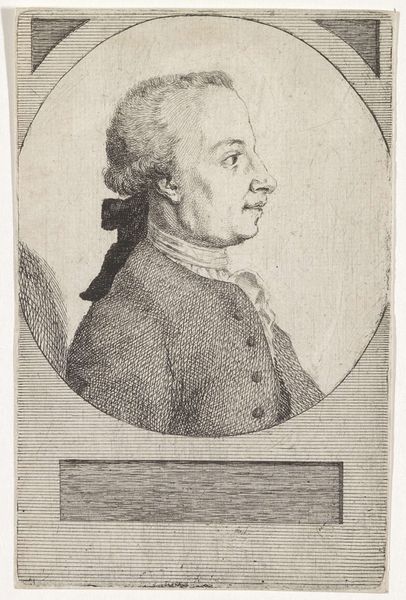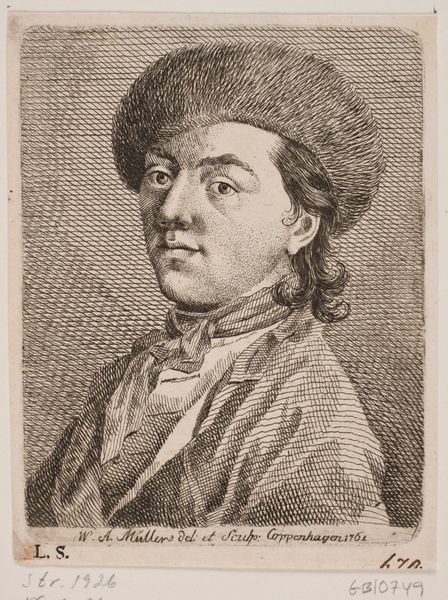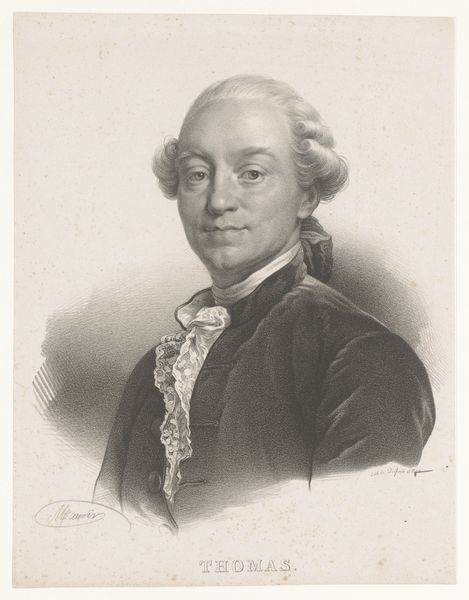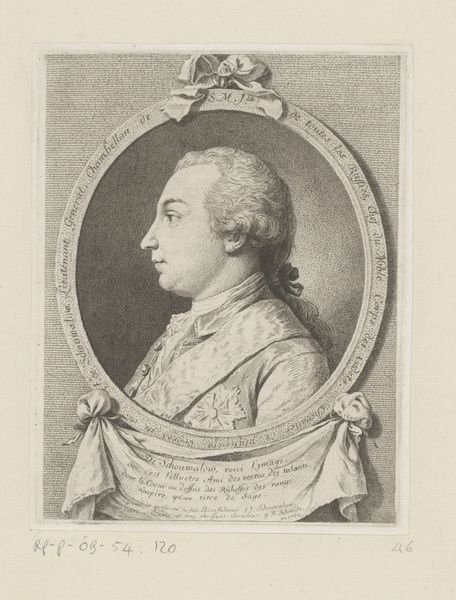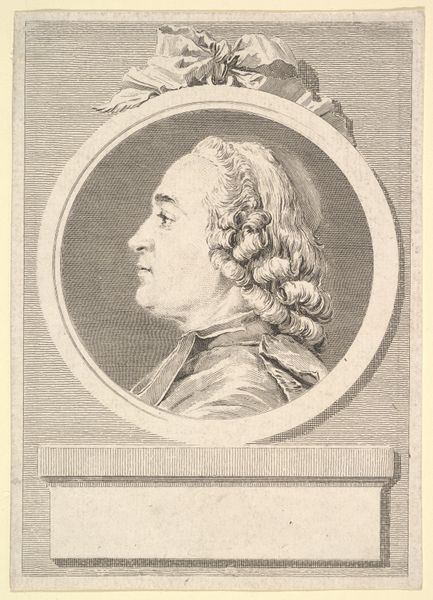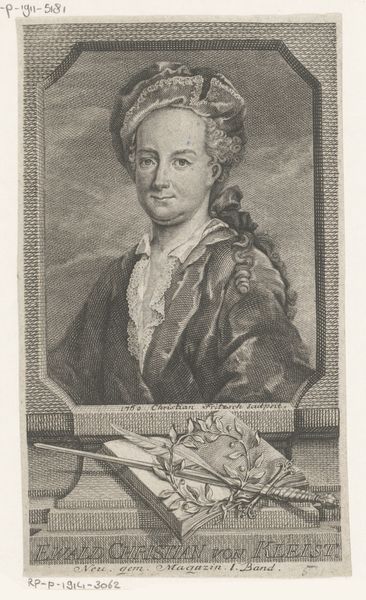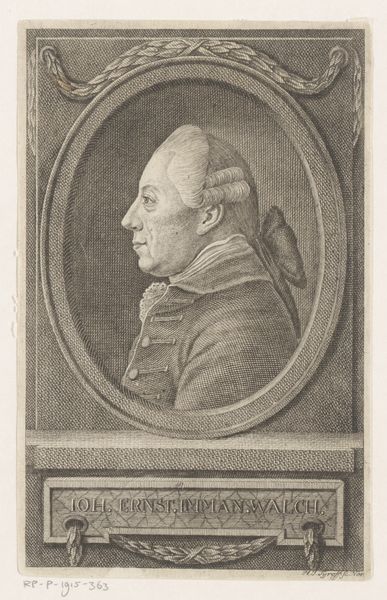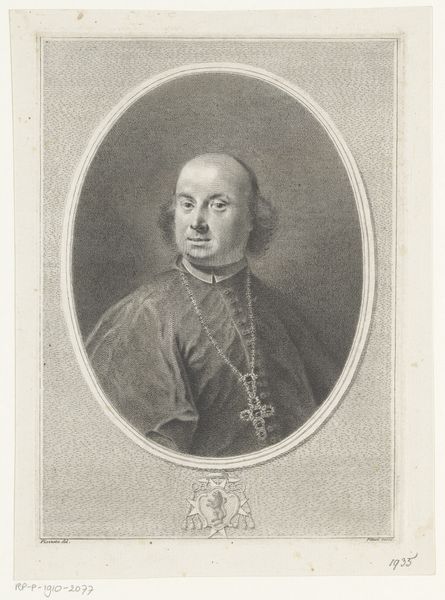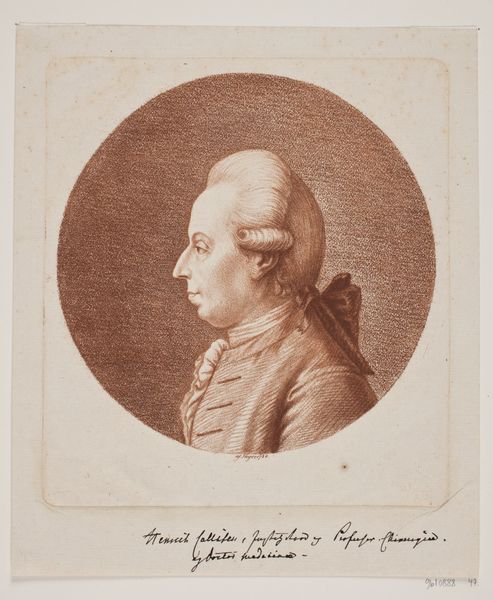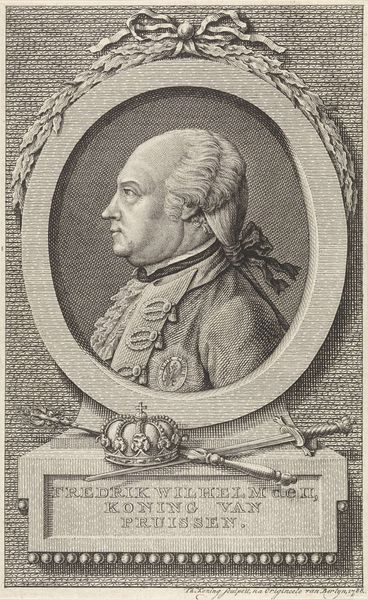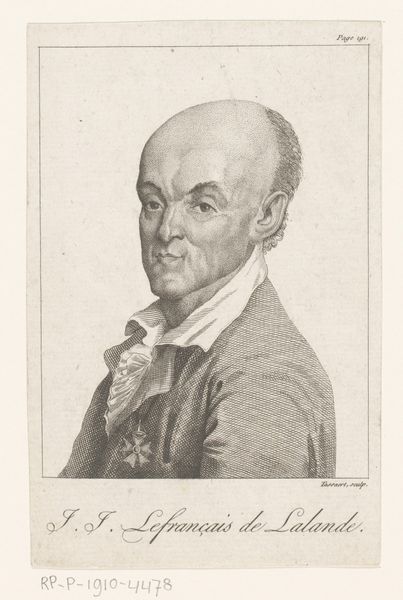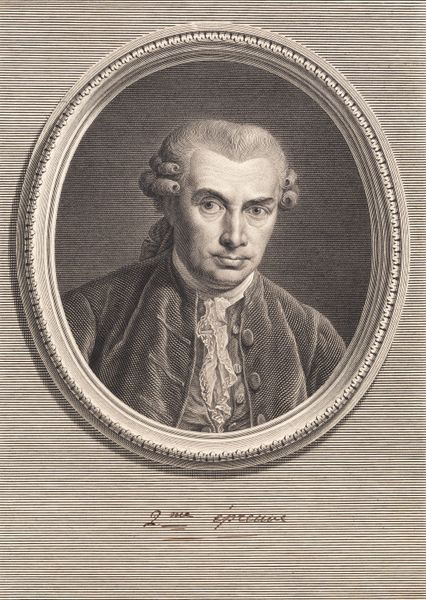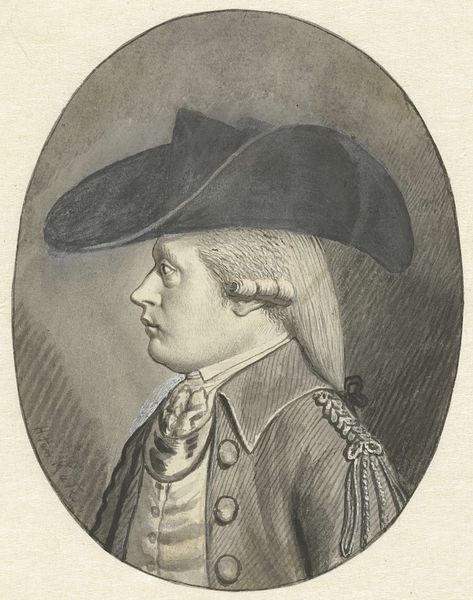
Dimensions: 260 mm (height) x 176 mm (width) (bladmaal), 152 mm (height) x 97 mm (width) (plademaal), 120 mm (height) x 73 mm (width) (billedmaal)
Editor: This etching, "Hans Vilhelm Riber" by J.F. Clemens, gives us a profile portrait of a man from the 18th century. I’m struck by how much detail the artist captured with such a seemingly simple medium. How would you interpret this work? Curator: I see a potent intersection of social class, representation, and artistic technique. The subject’s gaze avoids direct engagement. His attire, a finely striped coat, signifies his status within the societal hierarchy of the time, while the precise rendering hints at the artist’s desire to elevate him through this etching. Editor: So, it’s more than just a portrait; it’s a statement? Curator: Exactly! Consider who typically had portraits made during this period. What does it say about power dynamics, visibility, and the creation of a historical record? Moreover, consider the print medium itself. Prints circulated more widely than paintings, hinting at a strategic dissemination of his image and, by extension, his social position. Editor: That’s fascinating. It completely changes my understanding of the image. I initially just saw a portrait of someone important, but you're showing me the power of visual culture in reinforcing social hierarchies. Curator: Precisely. We must always remember that art is rarely produced in a vacuum. Investigating the circumstances of its creation gives us profound insight into the society that birthed it. The question remains: whose stories were deemed important enough to tell, and whose were silenced? Editor: I see your point. It is about the stories art tells us about social and political settings. It is clear that representation in this image comes with its own implicit message. Thanks for making me aware of this and other power relations. Curator: It is important to challenge our perceptions about the purpose of the portraits and other historical images to create broader inclusive perspectives.
Comments
No comments
Be the first to comment and join the conversation on the ultimate creative platform.
